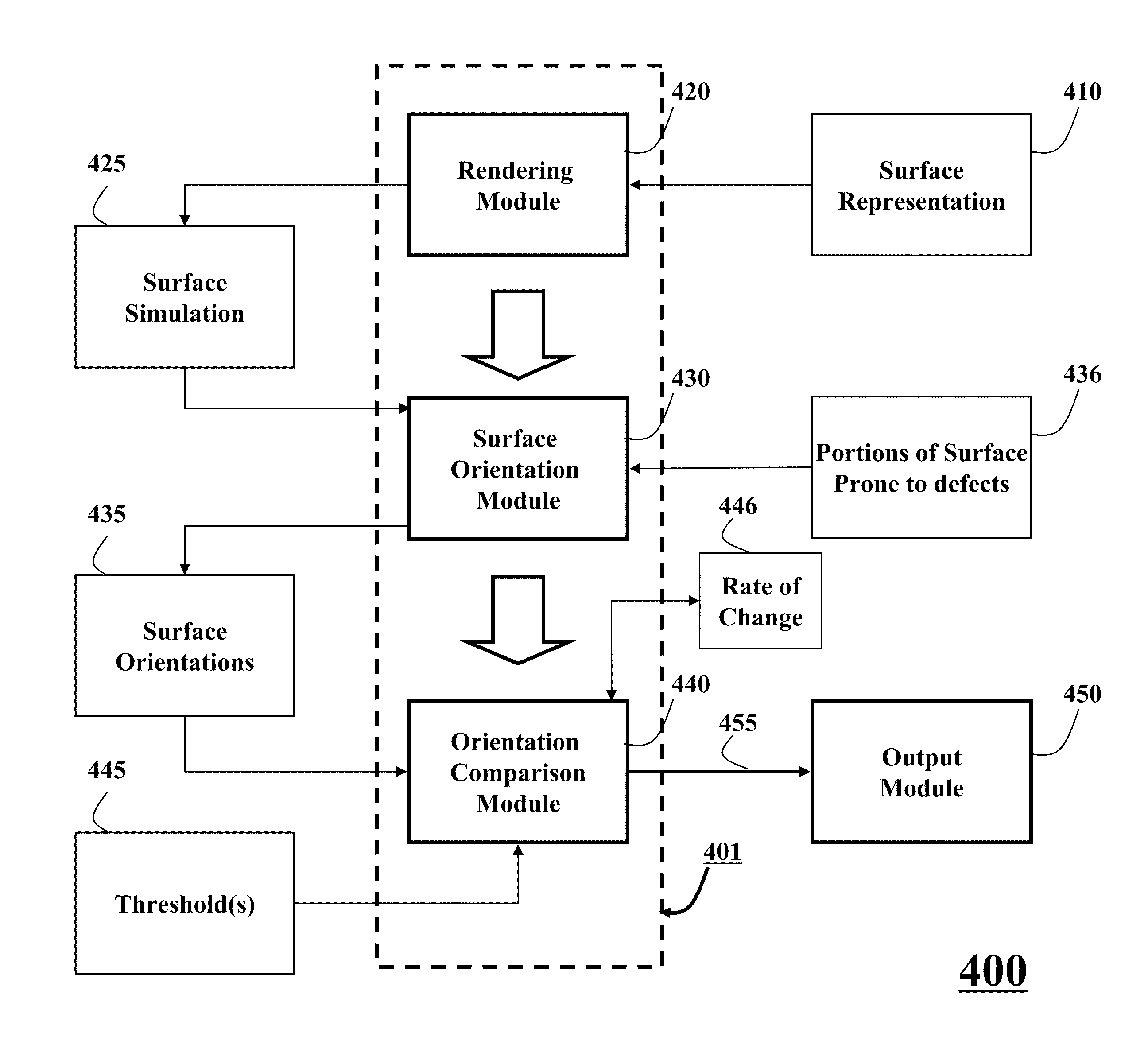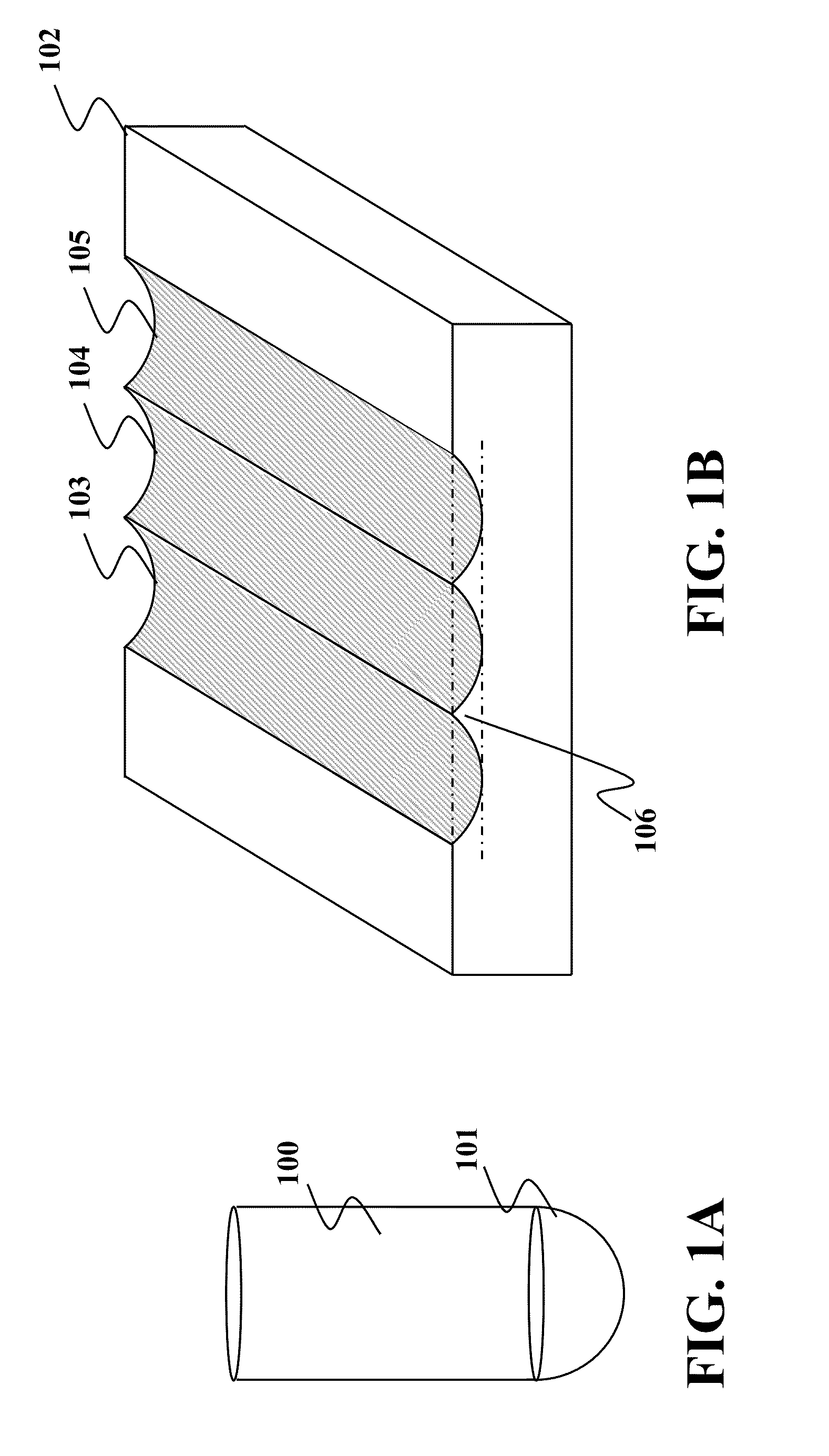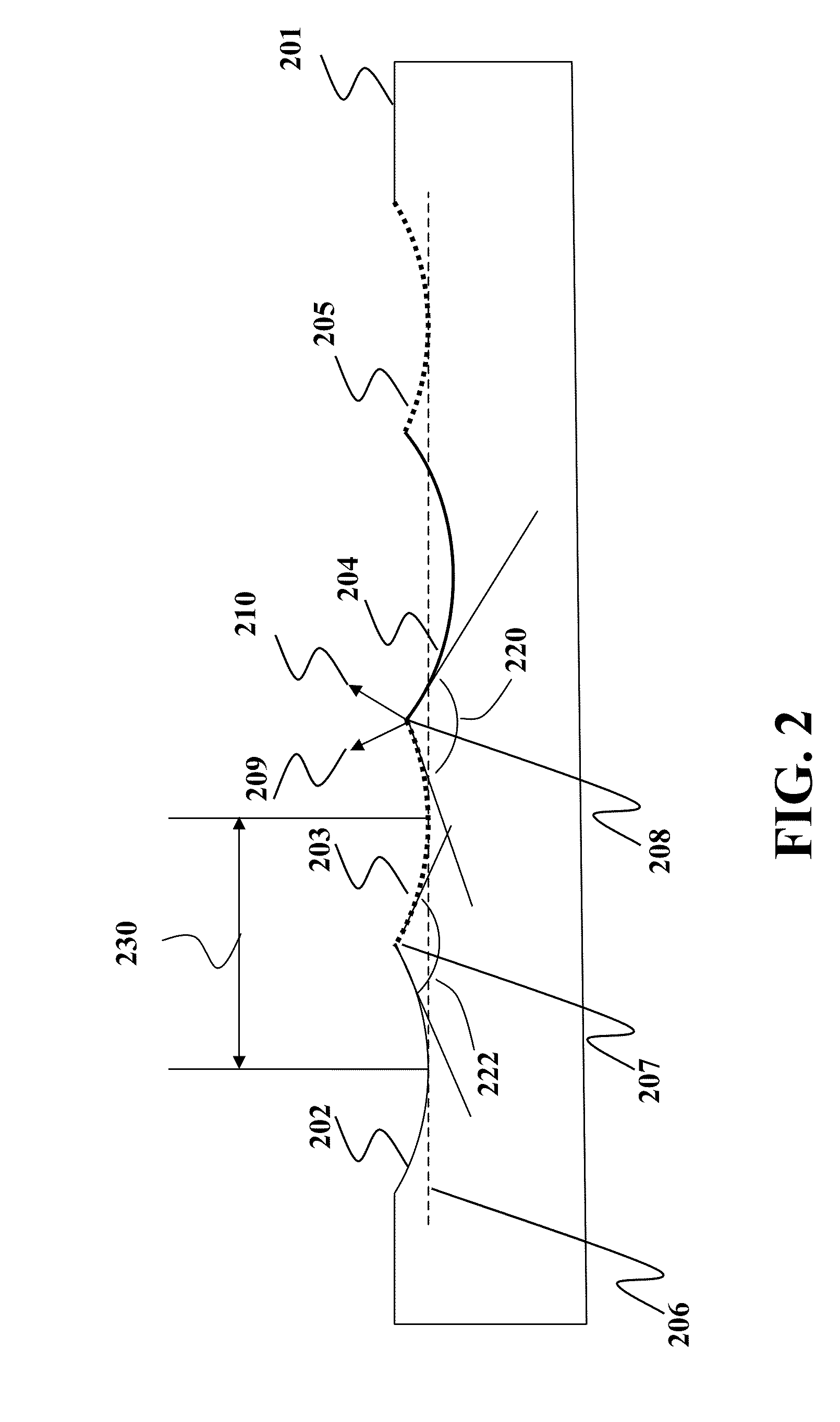System and Method for Identifying Defects of Surfaces Due to Machining Processes
a technology of surface defects and machining processes, applied in the field of simulation of machining processes, can solve the problems of difficult to see, small discrepancies between the actual the desired final shape of the workpiece, and achieve the effect of reducing memory requirements
- Summary
- Abstract
- Description
- Claims
- Application Information
AI Technical Summary
Benefits of technology
Problems solved by technology
Method used
Image
Examples
Embodiment Construction
[0032]FIG. 1A shows a ball end milling cutter 100 commonly used to fabricate free-form surfaces during numerically controlled (NC) machining. In particular, a smooth hemispheric bottom 101 of a cutter 100 is capable of machining smooth surfaces.
[0033]FIG. 1B shows an object 102 milled by three linear cuts 103, 104 and 105 of the ball end milling cutter 100 producing semi-cylindrical surfaces. Between each of the cuts there is a triangular cusp formed by an intersection of each pair of cuts. For example between cuts 103 and 104 there is a cusp 106.
[0034]FIG. 2 is a side view of an object 201 milled by four cuts 202-205 of the ball end milling cutter. The cuts 202, 203 and 205 have an identical depth indicated by a dashed line 206. However, the cut 204 is deeper than the cuts 202, 203 and 205. Each pair of the cuts meets at the cusp. For example, the cut 202 and the cut 203 meet at the cusp 207 and the cut 203 and the cut 204 meet at the cusp 208. Because the cut 204 is deeper than th...
PUM
 Login to View More
Login to View More Abstract
Description
Claims
Application Information
 Login to View More
Login to View More - Generate Ideas
- Intellectual Property
- Life Sciences
- Materials
- Tech Scout
- Unparalleled Data Quality
- Higher Quality Content
- 60% Fewer Hallucinations
Browse by: Latest US Patents, China's latest patents, Technical Efficacy Thesaurus, Application Domain, Technology Topic, Popular Technical Reports.
© 2025 PatSnap. All rights reserved.Legal|Privacy policy|Modern Slavery Act Transparency Statement|Sitemap|About US| Contact US: help@patsnap.com



